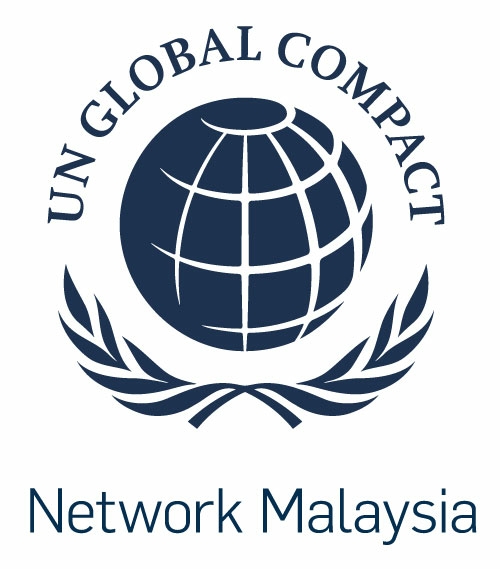Role of Businesses in Realizing SDG 3
Role of Businesses in Realizing SDG 3

(Article by Global Compact Network Malaysia)
The world’s major health priorities include reproductive, maternal and child health; communicable, non-communicable and environmental diseases; universal health coverage; and access for all to safe, effective, quality, and affordable medicines and vaccines. Chronic non-communicable diseases such as cardiovascular disease, cancer, diabetes and respiratory disease are now the leading causes of death and illness worldwide. They are projected to cost more than $30 trillion over the next two decades and push millions of people below the poverty line. Mental health disorders, malaria, HIV, TB, smoking, and road traffic deaths and injuries constrain global wellbeing, especially in developing countries, where 400 million people lack access to essential health services.
Businesses have a large impact on global health and wellbeing. A business’s own operations and supply chain can have direct negative impacts on health including through local pollution, disposal of hazardous waste, and health and safety standards on the work floor. The use of chemicals in the workplace can negatively impact workers’ health and make work particularly hazardous for children.
Business products and services can also impact on health: negatively as, for example, in the case of unhealthy foods, addictive substances, and defective products; and positively, for example through the development and provision of affordable medication and medical devices. Regardless of its industry or sector, business should recognize health in all its forms as a human right as defined by the World Health Organization, and it should act accordingly.
Business should also recognize the right to safe and healthy working conditions as set out in the International Covenant on Economic & Social Rights, taking steps to understand, monitor, and minimize negative health impacts throughout their end-to-end operations. As universal health coverage is often a public policy priority, businesses should ensure that their activities allow the government to achieve its goals, including through responsible tax practices. Businesses that are directly involved in provision of health care and medication must ensure that their practices do not undermine access to healthcare and medicines for poor and vulnerable populations through inappropriate pricing, lobbying, intellectual property protection, or similar practices.
State of Occupational Safety in Malaysia
- According to the Malaysian Social Security Organisation (SOCSO), there were 72,682 accidents reported in 2018 compared to 69,986 reported in 2017.
- However, the rate of fatal accidents at the workplace dropped by 14% (4.14/100,000 workers) in 2018 compared to 4.9/100,000 in 2017, according to the Human Resources Ministry of Malaysia.
- According to a study by Universiti Tunku Abdul Rahman, the construction industry and manufacturing industry accounted for 37% and 22% of all fatal injuries investigated by the Department of Occupational Safety and Hazard from 2000 – 2008, indicating that both these industries pose the highest risk to its workers in Malaysia.
Do your actions satisfy leadership qualities?
- Intentionality
- Is your company committed to supporting the achievement of Goal 3? Have you developed a holistic strategy that reflects this commitment, covering end-to-end operations and the wider community?
- Are you committed to learn from your actions and do you have processes in place to improve them accordingly?
- Is your strategy supported by the highest levels of management, including the Board of Directors?
- Ambition
- Do your actions achieve long-term outcomes that greatly exceed those resulting from current industry practice?
- Are your actions aligned with what is needed to achieve Goal 3?
- Consistency
- Is support for Goal 3 embedded across all organizational functions?
- Are staff and board incentives aligned with achieving Goal 3?
- Collaboration
- Do you proactively look for opportunities to partner with Governments, UN agencies, suppliers, civil society organizations, industry peers and other stakeholders to inform how to advance Goal 3?
- Accountability
- Do you publicly express your commitment to advance Goal 3?
- Do you identify, monitor, and report on impacts, including potentially adverse impacts?
- Do you mitigate risks associated with your action?
- Do you remediate negative impacts associated with this action?
- Do you engage stakeholders in a meaningful way?
Framework for Business Action
Business Action 1: Ensure the best possible health outcomes for employees and surrounding communities across own and supply chain operations
Business has an impact on the health of its own employees and within supply chain operations, as well as in surrounding communities, including through pollution, waste disposal, and occupational health and safety. Business has a responsibility to respect health as a human right, abiding by the pertinent laws, social and environmental standards, and monitoring health outcomes. As higher levels of unionization correspond to fewer workplace injuries and fatalities, companies should ensure freedom of association for their workers. Leading companies set new standards for improving health outcomes that can inspire others to take action and leverage their influence to improve practices across multiple tiers of their supply chains. This can include implementing far-reaching occupational health and safety standards and requiring similar standards of strategic suppliers, working with them to understand the health challenges faced by local communities in which they operate and addressing those. It can also be action to avoid any health impacts of disposal and treatment of potentially hazardous waste across end-to-end operations. Companies can lead in providing comprehensive health care coverage across its own operations and working with suppliers to build capacity to do the same.
Example Practice
- A garment manufacturer partners with peers and other stakeholders to create an independent, legally binding agreement with trade unions, the Accord on Fire and Building Safety in Bangladesh, designed to work towards a safe and healthy Bangladeshi Ready-Made Garment Industry. Its purpose is to enable a working environment in which no worker needs to fear fire, building collapses, or other accidents that could be prevented with reasonable health and safety measures
Business Action 2: Research, develop, and deploy products, services, and business models for improved health outcomes
Businesses have a large impact on health and well-being through the ways in which their products and services are used and consumed. Business should ensure that these comply with all relevant standards and that there are processes in place to ensure safety and appropriate use of products and delivery of services. For example, healthcare companies can work towards the appropriate prescription of antibiotics, and eliminate unnecessary care which uses up resources and can lead to unnecessary health complications. All companies should have systems to understand, monitor, and reduce health risks related to their products and services. Leading companies research, develop, and deploy products, services, and business models that improve health outcomes by minimizing negative health impacts and accelerating positive health impacts, with a particular focus on disadvantaged groups and underserved populations around the world. They can leverage their capabilities to innovate and bring new medication and health services delivery models to underserved regions. They can create and market food and drink that improves health outcomes. These actions have great potential for being carried out in public-private partnerships, as Governments play the central role in improving the health of its citizens.
Example Practice
- A health and nutrition company invests in a factory in Rwanda to produce fortified foods supporting maternal and childhood nutrition, resulting in better health outcomes for mothers and children, and addressing the issue of child stunting
Business Action 3: Lead on multi-stakeholder initiatives that encourage healthy behaviours and improve access to healthcare
Companies have critical resources, expertise, and technology that they can leverage through their convening power in multi-stakeholder partnerships for improved health outcomes. Leadership in these partnerships can bring the health improvement mandate and reach of Governments together with companies’ capabilities to deliver. Leading companies can support initiatives to address unhealthy behaviours, such as substance abuse and excess consumption of unhealthy foods. Company leadership in partnerships with other stakeholders is particularly important where it concerns serving regions and disadvantaged groups that lack adequate resources, including access to nutritional foods and medicines. Global health interventions to address their needs require significant manufacturing capacity and distribution capabilities, which Governments and international organizations do not have.
Example Practice
- A restaurant chain collaborates with qualified nutritionists to develop a series of affordable meals, recipes and guidebooks on healthy and balanced eating; it encourages consumers to adopt a healthy lifestyle in which the food they eat has high nutritional value and is not based on arbitrary ‘food exclusions’
Leadership on Goal 3 can yield significant returns for businesses. Annual healthcare costs are currently $7 trillion and rising as the global population grows, a large share of the global population that was previously in relative poverty increases its income so that it can access quality healthcare, and diseases and unhealthy lifestyles are on the rise. Business can responsibly access and create new markets for their products associated with these trends, as well as change the way they do business at present, to advance Goal 3.
Goal 3 is deeply interconnected with other Goals. Improved health can, in turn, reduce poverty, increase educational attainment, create opportunities for finding decent work, and free up resources for boosting economic productivity and environmental protection. As such, health and wellbeing are at the heart of a virtuous cycle that contributes to delivery of the Global Goals. This also implies that a failure to deliver on Goal 3 hampers all other Goals, and vice versa. In the medium term, and without rapid progress on efficiency, the risk that improved health may lead to greater consumption and energy use in ways that will make all the other Goals harder to attain should be carefully managed.



